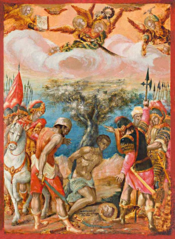
The Heptanese school of painting succeeded the Cretan school as the leading school of Greek post-Byzantine painting after Crete fell to the Ottomans in 1669. Like the Cretan school, it combined Byzantine traditions with an increasing Western European artistic influence and also saw the first significant depiction of secular subjects. The school was based in the Ionian Islands, which were not part of Ottoman Greece, from the middle of the 17th century until the middle of the 19th century. The center of Greek art migrated urgently to the Ionian islands but countless Greek artists were influenced by the school including the ones living throughout the Greek communities in the Ottoman Empire and elsewhere in the world.
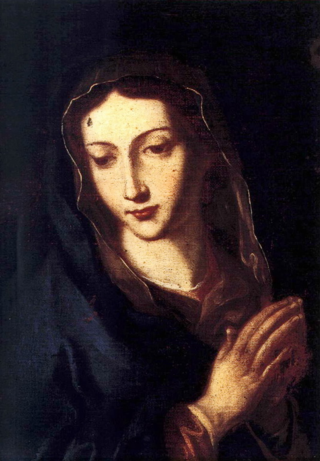
Panagiotis Doxaras (1662–1729) also known as Panayiotis Doxaras, was an author and painter. He was a prolific member of the Heptanese School. He was influenced by early members of the movement namely: Elias Moskos, Theodoros Poulakis, Stephanos Tzangarolas, Spyridon Sperantzas and Victor. The Heptanese School evolved during the Baroque period and continued into the Late Baroque or Rococo. Doxaras’s son Nikolaos Doxaras continued the artistic movement into the Neoclassical era. Both Panagiotis and his son Nikolaos Doxaras refined the school. The school was heavily influenced by the Venetian Style. The Heptanese School also influenced Italian painting. Other artists Doxaras influenced were Nikolaos Kantounis. Panagioti’s teacher was famous painter Leos Moskos. He studied with him while he was in Venice. Doxaras painted notable portraits of Johann Matthias von der Schulenburg. He introduced Maniera Italiana to the Heptanese School drastically changing the style from the Maniera Greca. He is considered the father of the Greek Rococo and the Modern Greek Enlightenment in art.

Theodore Poulakis was a Greek Renaissance painter and teacher. He is considered the father of the Heptanese School and one of the most prolific painters of Venetian Crete. Poulakis was a member of the Cretan School, his contemporary was Emmanuel Tzanes. Emmanuel Tzanes and Poulakis were active painters of the Cretan School until Candia, went to war with the Ottomans around 1649. Candia finally fell after twenty years of siege in 1669. Poulakis settled on the island of Corfu. Stephanos Tzangarolas was another famous painter in Corfu around the same period. Poulakis's works are likened to Andreas Pavias and Georgios Klontzas. Poulakis works exhibit qualities of the Venetian school. Over 130 of his paintings have survived and can be found all over the world.
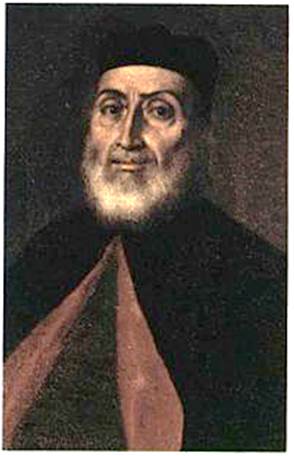
Nikolaos Koutouzis, or Koutousis was a Greek painter, poet and priest. He was part of the Heptanese School, but also a member of the Modern Greek Enlightenment in art. His teacher was the painter Nikolaos Doxaras. Koutouzis has 136 paintings attributed to him. He was one of the last Greek painters to incorporate the Venetian style during its decline, due to the Fall of the Republic of Venice. He was the teacher of Nikolaos Kantounis, who was heavily influenced by his style.

Spyridon Ventouras also known as Spyridon Venturas. He was a Greek painter, professor and architect. He was a prominent member of the Heptanese School. He represented the art of Lefkada. Many Greek painters were associated with the island namely: Konstantinos Kontarinis, Stylianos Devaris, Spyridon Maratzos, and Makarios Lefkas. Other active painters of the Heptanese School during the same period were Nikolaos Koutouzis and Nikolaos Kantounis. The Greek community was undergoing the Neo-Hellenikos Diafotismos in art. Ventouras influenced countless artists both Greek and Italian. The painting of John Chrysostom, Criticizing Empress Eudoxia was copied by many painters from the region. Some of the artists were Makarios Lefkas and Stylianos Devaris. Ventouras also painted his own version. According to the Institute of Neohellenic Research, over sixty of his paintings have survived, five of them were notable portraits. His most notable work was a Portrait of Ali Paschi.

Stephanos Tzangarolas also known as Stephano Tzangarola. He was a Greek painter during the late Cretan Renaissance. He migrated from Crete to the island of Corfu. He is a member of the Heptanese School and the Cretan Renaissance. His contemporaries at the time were Panagiotis Doxaras, Theodore Poulakis and Elias Moskos. His artwork began to reflect the transition of the classical maniera greca of Crete to the more refined style of the Ionian Islands. His style resembles the transition of Gentile da Fabriano and Fra Angelico from the maniera greca to their respective styles. Tzangarolas paintings influenced countless artists both Italian and Greek. Some artists that reflect his style include Spyridon Sperantzas and Georgios Kastrofylakas. His paintings can be found all over Greece mainly Athens and the Ionian Islands. Some of his work is in Cairo and London. His student was famous Greek painter Andreas Karantinos.
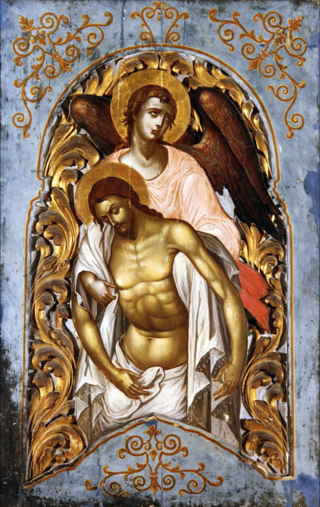
Nikolaos Kallergis, also known as Kalergis. He was a Greek painter during the Greek Rococo and the Modern Greek Enlightenment in art also known as Neo-Hellenikos Diafotismos. His art also exhibited Venetian influence. Painters of the maniera greca began to refine their art. Philotheos Skoufos, Elias Moskos, and Theodore Poulakis were all active painters on the Ionian Islands prior to Kallergis. They set the stage for the transition to the Heptanese School. Panagiotis Doxaras is the forefather of the new painting style. He was the father of Greek Rococo and the Modern Greek Enlightenment in painting. Kallergis became an active member of the school. Kallergis also represents the Greek Rococo. His art began to exhibit qualities of Greek and Italian Neoclassicism. His style influenced countless painters. Examples include Nikolaos Kantounis, Nikolaos Koutouzis, Nikolaos Doxaras, Spiridione Roma, and Eustathios Karousos. His most famous work is Christ and Angel it is at the Zakynthos Museum.

Spyridon Sperantzas was a Greek painter. He flourished during the Greek Neoclassical era and the Modern Greek Enlightenment in art also known as Neo-Hellenikos Diafotismos. Because of the Fall of the Republic of Venice, Sperantzas brought the Heptanese School into the Greek Romantic period. By the 1800s the Ionian Islands were occupied by both French and English forces and for the first time since the fall of the Byzantine Empire, the local Greeks governed themselves. Sperantzas, Nikolaos Kantounis, and Nikolaos Koutouzis represent the transition in painting that defined Modern Greek art. Sperantzas was influenced by Nikolaos Kallergis, Nikolaos Doxaras, and Nikolaos Koutouzis. His son Michael Sperantzas was also a famous painter and his apprentice. Spyridon also painted frescos.

Stylianos Stavrakis, was a Greek painter during the Neo-Hellenic Enlightenment era in art. He was a goldsmith and painter. He was very active on the Ionian Islands. Nikolaos Koutouzis, Nikolaos Doxaras and Nikolaos Kallergis were all active in Zakynthos during the same period. He is a prominent member of the coveted Heptanese painting style. He comes from a family of painters. His brother Andreas Stavrakis and nephew Demetrios Stavrakis were both famous painters. He influenced countless artists. Konstantinos Kontarinis and other artists of the Ionian Islands began to emulate his work. His most notable work is The Deposition from the Cross (Stavrakis). Fourteen of his paintings survived. Most of them can be found in Zakynthos, Greece.
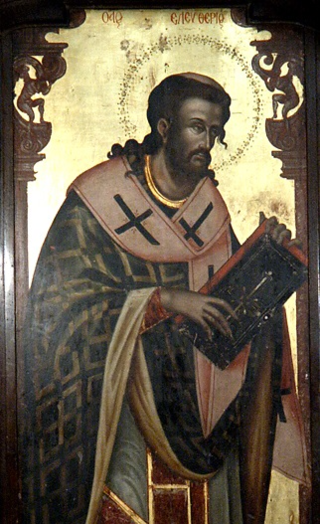
Efstathios Karousos also known as Eustathios Karousos, Efstathio Karousou (Greek: Ευστάθιο Καρουσου, Eustacchio Caruso and Eustachio Caruso. He was a Greek painter and writer. He is one of the elite painters from the island of Cephalonia. Other painters from the same region around the same period included Andreas Karantinos and Gerasimos Pitsamanos. He was active in Cephalonia, Naples, Trieste, and other parts of Italy. Some of his paintings have survived. He is one of few Greek painters to have worked and lived outside of the Venetian Empire. Both Karousos and Belisario Corenzio were active painters in Naples. Some of his work emulated the typical Heptanese School. According to the Institute of Neohellenic Research, forty-nine of his works survived. Thirty-eight of his works are in the church Santi Pietro e Paolo dei Greci.

Konstantinos Kontarinis, also known as Konstantino Kontarini, was a Greek Baroque painter of the Heptanese School. He was heavily influenced by the works of Theodore Poulakis. His contemporaries at the time were Stephano Tzangarola and Panagiotis Doxaras. His work signals a transition for the Cretan School to the more refined Heptanese School. Kontarinis clearly follows the traditional maniera greca. The art was heavily influenced by the Venetian style. He influenced the works of countless Greek and Italian painters namely Spyridon Sperantzas and Nikolaos Kallergis. According to the Institute of Neohellenic Research, eighty-five of his works survived. His most notable work is the portable icon consisting of Scenes from Genesis. It is featured at the Byzantine Museum Athens, Greece.

Stylianos Devaris, also known as Defaris and Kornaros respectively. He was a Greek painter and goldsmith. He was one of the prominent painters from the island of Lefkada. He was a member of the Heptanese School. The island featured many painters namely: Konstantinos Kontarinis, Spyridon Ventouras, Spyridon Maratzos, and Makarios Lefkas. A notable theme popular on the island was John Chrysostom, Criticizing Empress Eudoxia. Stylianos painted his own version of the theme. Spyridon Ventouras and Makarios Lefkas also painted their versions. Devaris mainly painted ecclesiastical themes. According to the Institute of Neohellenic Research, over nineteen of his paintings have survived. His most notable work was John Chrysostom, Criticizing Empress Eudoxia.
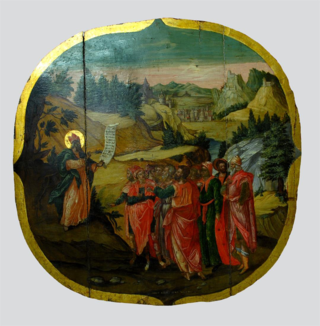
Demetrios Nomikos was a Greek painter, goldsmith, and priest. He shared the same last name with other famous Greek painters. Georgios Nomikos, Demetrios Nomikos and his brother Nicholas Nomikos. He is one of the early representatives of the Heptanese School of painting. He was active during the Greek Baroque and Rococo. He worked with notable Greek painter Antonios Notaras. Konstantinos Kontarinis, Stylianos Stavrakis and Nikolaos Kallergis were active on the same islands around the same period. Nomikos was a master gilder. According to the Institute of Neohellenic Research, five of his works survived. His most notable works are at the Loverdos Museum.

Demetrios Stavrakis, also known as the so-called Romanos was a Greek painter of the Heptanese School. His uncles were famous painters Andreas Stavrakis and Stylianos Stavrakis, active on the island of Zakynthos. Demetrios influenced both Greek and Italian artists. According to the Institute of Neohellenic Research, fifteen of his works survived. His most notable work was The Profit Jonah.

Christ Enthroned is a tempera icon by Emmanuel Tzanes, a Greek painter of the Late Cretan School. It is currently at the Byzantine & Christian Museum in Athens.

The Prophet Jonah was a tempera painting created by Demetrios Stavrakis. He was a Greek painter representing the Heptanese School. His nickname was Romanos. He was active during the 18th century. He flourished on the island of Zakynthos. He was the nephew of Stylianos Stavrakis and Andreas Stavrakis. Both were famous painters. He thrived during the Greek Rococo and Neoclassical eras in Greek art. Fifteen of his works survived.

The Deposition from the Cross or Descent from the Cross is a tempera painting created by Greek painter Stylianos Stavrakis. He was active during the early part of the 1700s. His nephew and brother were also famous painters. His nephew Demetrios Stavrakis was also his pupil. He was also a goldsmith. Most of his works were completed on the island of Zakynthos. He was a representative of the Heptanese school and Greek Rococo. Fourteen of his paintings survived.

The Holy Family is an oil painting created by Greek painter Panagiotis Doxaras. He was a prominent member of the Heptanese School. He was also an author. His son Nikolaos Doxaras was also a famous painter. Panayiotis was from a small village named Koutifari, close to Kalamata. He moved to Zakynthos at a young age. He studied painting with famous painter Leos Moskos. He traveled all over the Venetian empire with the famous artist including Venice. He studied painting in Venice for five years. He became a theoretical painter. He wrote several books on painting. He traveled all over the Ionian Islands. He lived in Lefkada, Zakynthos, and Corfu. He frescoed the ceiling of Panagia Faniromeni in Zakynthos. Eighteen of his paintings survived.

Saint Spyridon, John the Baptist, Saint Peter and Saint George is an oil painting created by Greek painter Nikolaos Koutouzis. He was a prominent member of the Heptanese School of painting. He was from the island of Zakynthos. He studied with Nikolaos Doxaras and Giovanni Tiepolo. He was an active painter for over fifty years. One hundred and thirty-six paintings are attributed to the artist. He was active from 1750 to 1813.

The Virgin and Child Enthroned is a tempera painting created by Spyridon Romas. He was a Greek painter from the island of Corfu and a prominent member of the Heptanese School active from 1745 to 1786 in Corfu, Lecce, Livorno, and London. Twenty-five of his works survived according to research completed by the Hellenic Institute. One of few Greek painters that changed his style completely Romas transitioned from the Heptanese School to the British style of painting. He traveled to London, England around 1770, and remained in the country until his death. Romas painted several portraits but also maintained art. An important iconostasis containing most of his works is preserved in Livorno, Italy at the Museo della Città di Livorno.


